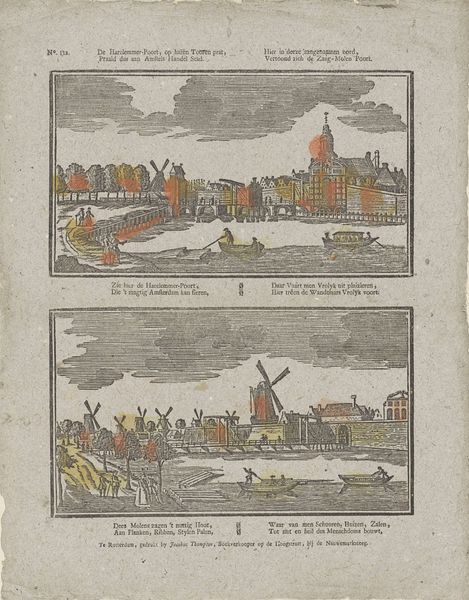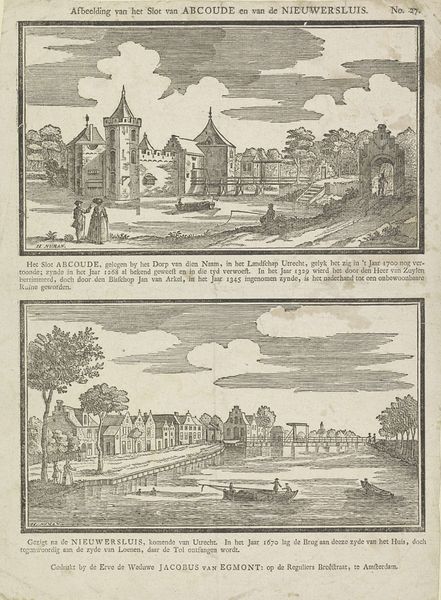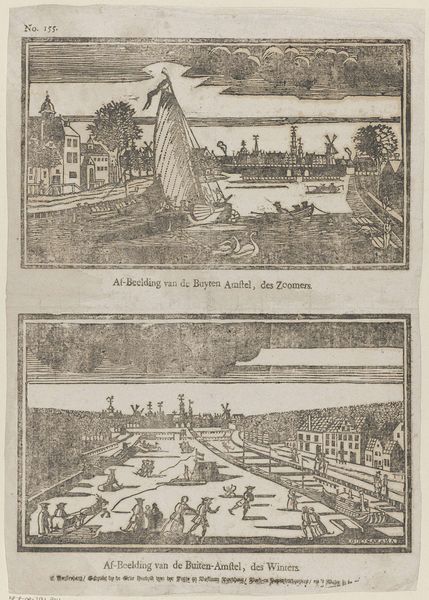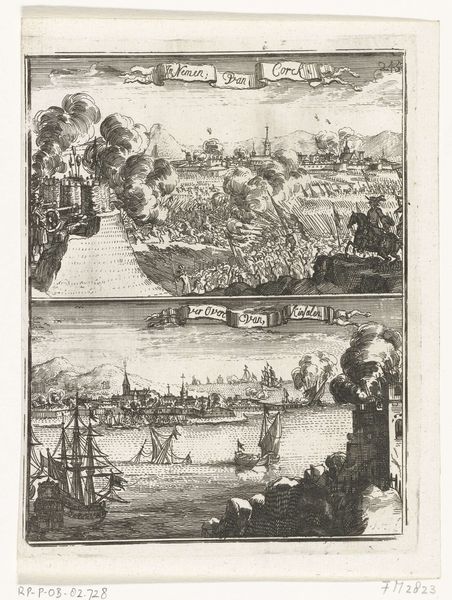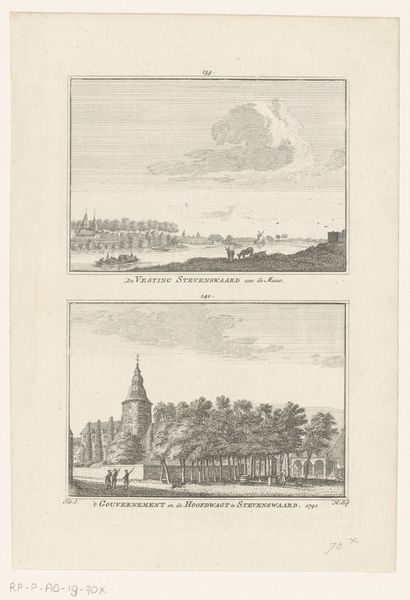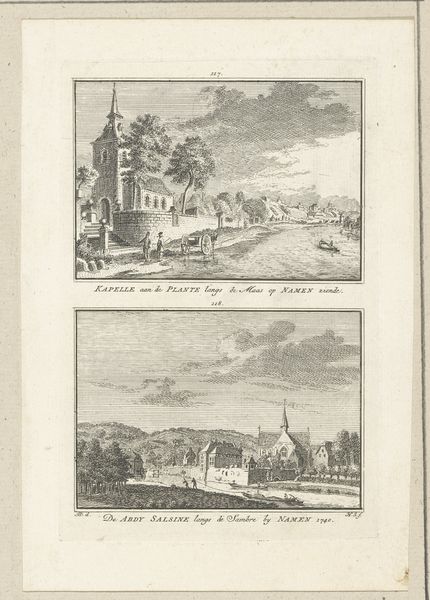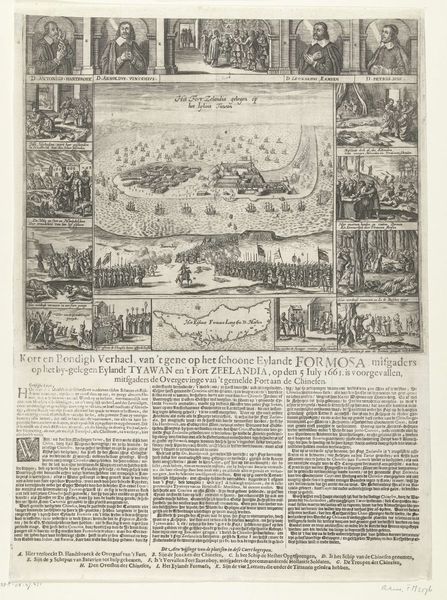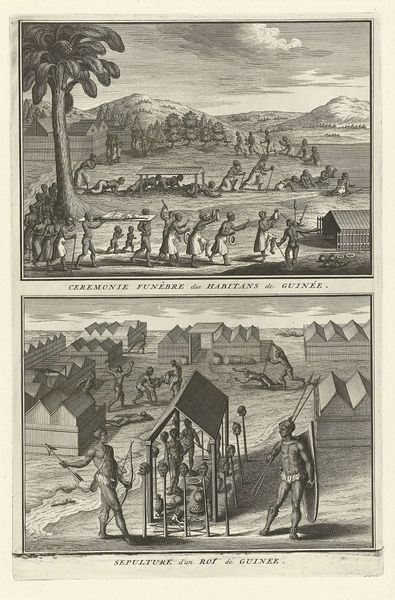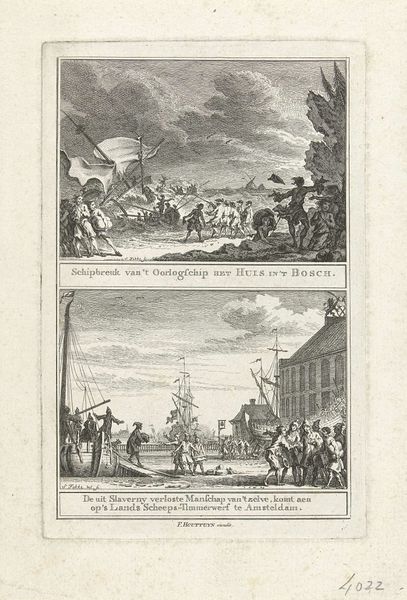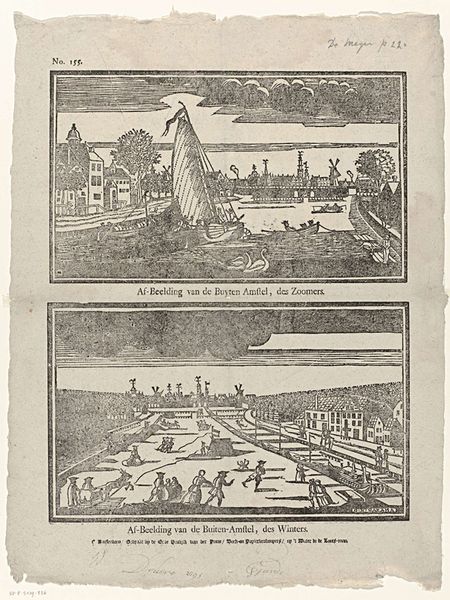
Afbeelding van de Haarlemmer-Poort / Afbeelding van de Zaag-Moolens Poort: Met de klok-gietery, in het verschiet 1761 - 1804
0:00
0:00
print, engraving
#
dutch-golden-age
# print
#
old engraving style
#
landscape
#
cityscape
#
engraving
Dimensions: height 418 mm, width 324 mm
Copyright: Rijks Museum: Open Domain
Editor: Here we have a print titled "Afbeelding van de Haarlemmer-Poort / Afbeelding van de Zaag-Moolens Poort: Met de klok-gietery, in het verschiet" created sometime between 1761 and 1804, currently residing in the Rijksmuseum. The starkness of the engraving lends it a very documentary feel, a snapshot in time. What do you see in this piece? Curator: What strikes me most is the artist's attempt to capture the spirit of Amsterdam through its infrastructure and activity. These aren't just cityscapes; they’re depictions of labor, trade, and social hierarchies. Notice how the windmills and shipyards, vital to the Dutch Golden Age economy, are given prominence. How does this representation align with what you know about Dutch power and colonial endeavors of this period? Editor: I hadn't considered it in those terms. I was more focused on the aesthetic qualities, but you’re right. The inclusion of those working elements shifts the entire context. Curator: Exactly. It prompts us to consider whose stories are being told – and whose are being omitted. The industriousness could be interpreted as a justification for the colonial exploits that funded this wealth. What ethical questions does this raise for you as a viewer? Editor: It definitely makes me think about the exploitation that underpinned that economic success, and how art can both reflect and mask those realities. So, it is almost a propagandistic approach, isn't it? Curator: In a way, yes. And recognizing that layers another dimension to our understanding of the piece and its context. Thank you for opening my eyes further. Editor: It makes you think twice about these nostalgic views. Thanks, I learned so much.
Comments
No comments
Be the first to comment and join the conversation on the ultimate creative platform.
